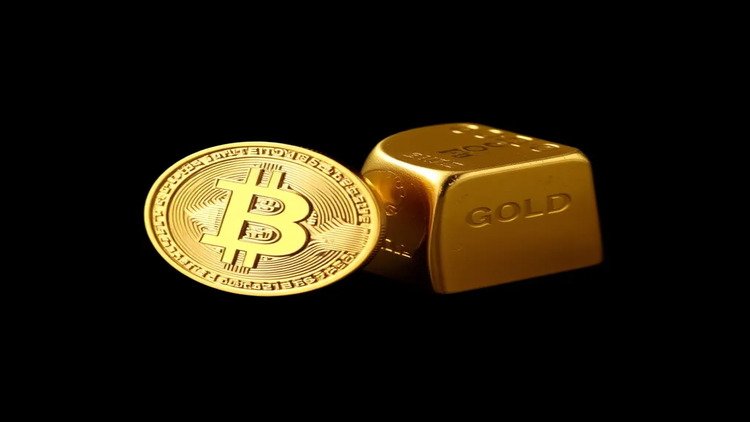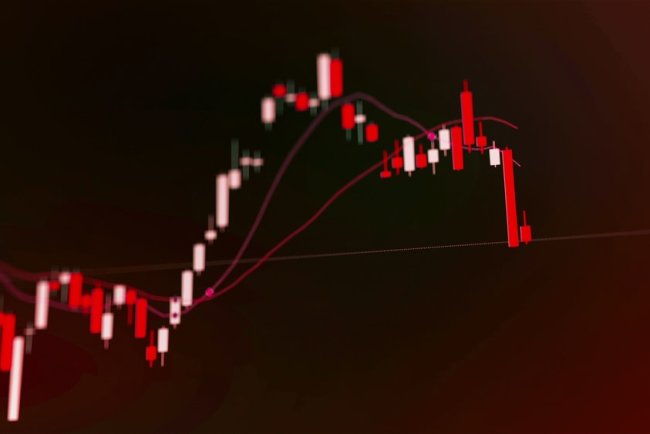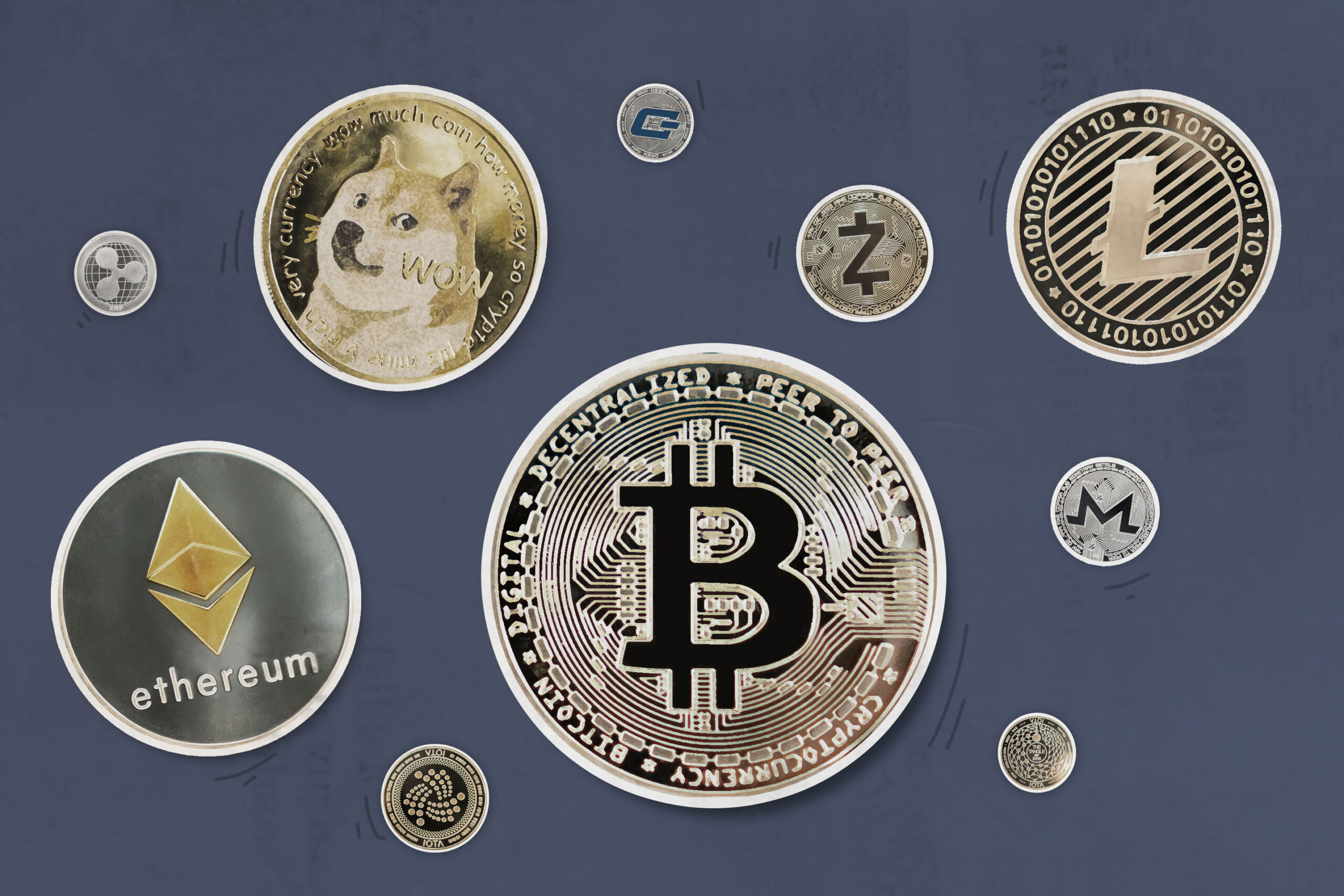Bitcoin vs. Gold Which Asset is the Ultimate Inflation Hedge?
In the ongoing debate over the best inflation hedge, Bitcoin and gold are emerging as key contenders amid global economic uncertainty. As of 2024, Bitcoin has surged 60% to $67,683, while gold has risen 33% to $2,758.45 per ounce. The Bitcoin-to-gold ratio indicates a shift in investor sentiment, with Bitcoin now equivalent to 24 ounces of gold, down from 34 earlier in the year. Gold remains a traditional safe haven, bolstered by increased central bank reserves and ongoing geopolitical tensions. Conversely, Bitcoin attracts institutional interest and offers high return potential, though it is more volatile. Ultimately, while Bitcoin appeals to risk-tolerant investors, gold's stability solidifies its status as the ultimate inflation hedge.

In today's climate of global economic uncertainty, investors are increasingly looking to Bitcoin (BTC) and gold as potential safeguards against inflation. While gold has long been the traditional choice for this purpose, Bitcoin's limited supply and potential for significant returns are making it an attractive alternative. However, both assets come with unique risk and reward profiles, leading to ongoing discussions about which one truly serves as the best inflation hedge.
To shed light on this topic, Finbold consulted ChatGPT-4o for insights into which asset offers the most effective inflation-hedging potential in the current economic landscape.
Performance Overview
As of 2024, Bitcoin has surged by 60% year-to-date, reaching a price of $67,683. In comparison, gold has also seen impressive gains, climbing to $2,758.45 per ounce, which represents a 33% increase year-to-date.
Despite these gains, geopolitical tensions and socioeconomic factors have complicated the roles of both assets as stores of value.
Diverging Paths: BTC vs. Gold
The Bitcoin-to-gold ratio, which compares the value of Bitcoin to gold per ounce, indicates that Bitcoin's outperformance has diminished since March 2024. Current data shows that Bitcoin is now equivalent to 24 ounces of gold, down from a high of 34 ounces earlier in the year.
This trend highlights gold's enduring appeal amid economic pressures, with analysts from Bank of America labeling it the "last safe haven" due to rising U.S. debt and concerns over Treasury supply.
Additionally, the U.S. dollar index has recently risen to 104.24, bolstered by strong economic data and the Federal Reserve's cautious approach to rate cuts. Typically, this environment would dampen interest in non-yielding assets like gold; however, demand for gold remains strong amid broader market uncertainties.
Central banks have also increased their gold holdings, with gold now constituting 10% of global reserves, a significant rise from 3% a decade ago. Upcoming economic reports, including core PCE data, could further influence the Fed's rate strategy and impact gold's price trajectory, with some analysts predicting a year-end target of $3,000 per ounce.
Bitcoin's Institutional Demand and Geopolitical Risks
Bitcoin's status as an inflation hedge is increasingly polarizing among investors. There has been heightened demand from institutional investors, particularly with a recent inflow streak in BlackRock’s IBIT ETF. Open interest in Bitcoin derivatives has also increased, with a notable chance that BTC could reach $100,000 by December.
However, Bitcoin's performance is sensitive to geopolitical events. Analysts from Standard Chartered have noted that rising tensions, particularly in the Middle East, could lead to a decline in Bitcoin's value, potentially dropping below $60,000. They emphasize that Bitcoin serves more as a hedge against traditional financial instability rather than direct geopolitical risks.
With the U.S. presidential election approaching, many speculate that a Trump victory could positively impact Bitcoin due to his pro-crypto stance, although volatility is expected in the interim.
ChatGPT's Analysis: The Conclusion
According to ChatGPT, gold's resilience and established reputation as a safe haven make it a strong inflation hedge amid ongoing fiscal uncertainty and geopolitical unrest.
On the other hand, Bitcoin, with its capped supply and potential for high returns, continues to attract risk-tolerant investors looking for digital alternatives.
In summary, while Bitcoin appeals to those interested in speculative growth, gold's consistent performance in turbulent markets solidifies its position as the ultimate inflation hedge in 2024.
FAQ: Bitcoin vs. Gold as Inflation Hedges
Q1: Why are investors considering Bitcoin and gold as hedges against inflation?
A1: Investors are looking at Bitcoin and gold as potential hedges against inflation due to ongoing global economic uncertainty. Both assets are traditionally viewed as stores of value that can protect wealth from currency devaluation and rising prices.
Q2: How have Bitcoin and gold performed in 2024?
A2: In 2024, Bitcoin has seen a remarkable increase of 60%, reaching a price of $67,683. Gold has also performed well, climbing to $2,758.45 per ounce, which represents a 33% gain year-to-date.
Q3: What does the Bitcoin-to-gold ratio indicate?
A3: The Bitcoin-to-gold ratio shows the relative performance of the two assets. Currently, Bitcoin is equivalent to 24 ounces of gold, down from a high of 34 ounces in March 2024. This change suggests a shift in investor sentiment and valuation between the two assets.
Q4: Why is gold still considered a safe haven?
A4: Gold is considered a safe haven due to its long history as a reliable store of value, especially during economic instability. Additionally, central banks have significantly increased their gold reserves, which reinforces its status as a protective asset.
Q5: What factors influence Bitcoin's value?
A5: Bitcoin's value is influenced by various factors, including institutional interest, market sentiment, and geopolitical events. For instance, the growing demand from institutions, such as BlackRock’s IBIT ETF, can drive prices up, while geopolitical tensions may lead to price volatility.
Q6: How do Bitcoin and gold compare in terms of risk and return?
A6: Bitcoin is generally considered a higher-risk, higher-reward asset due to its volatility and growth potential. In contrast, gold is viewed as a more stable investment, providing consistent returns during economic downturns, making it suitable for risk-averse investors.
Q7: What is the outlook for gold and Bitcoin in the near future?
A7: Analysts predict that gold may reach $3,000 per ounce by the end of the year, driven by economic pressures and geopolitical risks. Bitcoin's performance may be influenced by upcoming events, such as the U.S. presidential election, which could impact market sentiment and institutional investment.
Q8: Which asset is ultimately the better inflation hedge?
A8: According to various analyses, gold is often viewed as the more reliable inflation hedge due to its established history and stability. However, Bitcoin may appeal to those willing to take on more risk for potentially higher returns, especially in a digital asset landscape.
What's Your Reaction?















